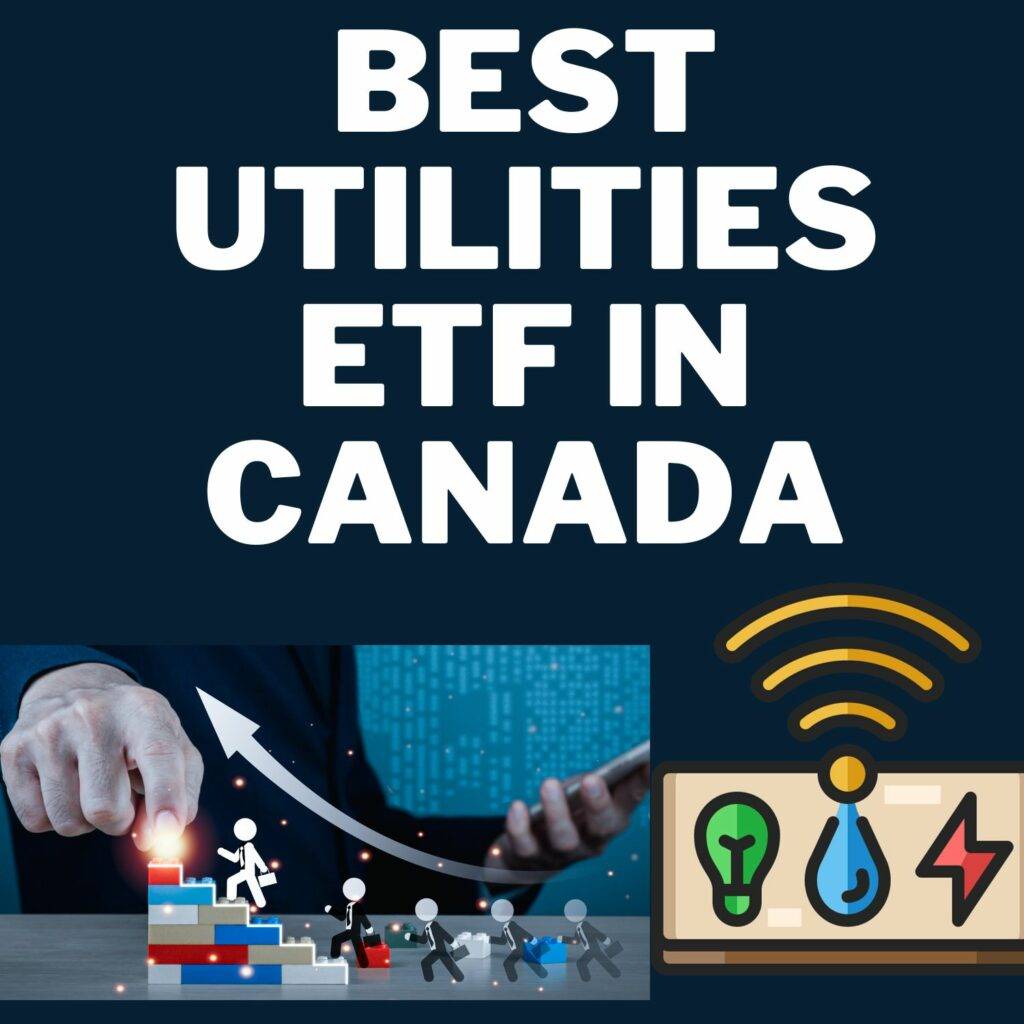In the ever-changing landscape of investments, the utility sector stands as a bedrock of stability and necessity. Companies involved in the generation, transmission, and distribution of electricity, natural gas, and water operate within a regulated and predictable environment, offering investors a reliable haven of steady cash flows. But why should you consider allocating a portion of your portfolio to the utility sector?
1. Resilience in Uncertain Times: The utility sector has proven resilient, even in the face of economic downturns. The essential services provided by utility companies ensure a consistent demand for their products, making their revenue streams less susceptible to the volatility experienced by other sectors. This stability can act as a buffer during challenging economic climates.

2. Predictable Cash Flows: Investing in utilities often means investing in predictable cash flows. As essential services providers, utility companies typically enjoy a steady demand for their products, translating into reliable revenue. This predictability is attractive to investors seeking a consistent income stream, making the utility sector a potential cornerstone for income-focused portfolios.
3. Defensive Nature of Investments: The defensive nature of utility stocks becomes evident during market downturns. Investors often turn to utilities as a defensive play, seeking refuge in sectors that are less influenced by economic cycles. This defensive characteristic can contribute to portfolio stability during periods of market turbulence.
What are the largest ETFs in Canada?
Review of XEI – Ishares S&P TSX Comp High Div Index ETF
The Role of Utilities ETF in your portfolio
Within the utility sector, Exchange-Traded Funds (ETFs) offer a strategic avenue for investment. Utilities ETFs curate diversified portfolios of utility stocks, providing investors not only with potential capital appreciation but also a reliable income stream. These ETFs enhance the resilience and diversity of your investment portfolio by spreading risk across multiple companies within the sector. Additionally, the liquidity and transparency of ETFs make them a convenient and efficient way to gain exposure to the utility sector.
1. Diversification Benefits: Utilities ETFs allow investors to access a broad spectrum of utility companies, reducing the risk associated with individual stock selection. Diversification helps mitigate the impact of poor-performing assets, contributing to a more stable and balanced investment portfolio.
2. Income Generation: Many utilities ETFs focus on high-dividend-yield stocks within the sector. This emphasis on income generation can be particularly appealing to investors seeking regular cash flow while benefiting from potential capital appreciation. The combination of dividends and potential stock appreciation enhances the overall return on investment.
Risks Associated with Utility Investments:
While the utility sector is known for its stability, it is not immune to risks. Understanding the potential pitfalls and challenges associated with investing in utilities is crucial for making informed decisions.
1. Regulatory Uncertainties: The regulatory environment can impact the operations and profitability of utility companies. Changes in regulations, tariff structures, or government policies can introduce uncertainties that may affect the financial performance of companies within the sector. Investors need to stay vigilant and assess the regulatory landscape to anticipate potential impacts on their investments.
2. Environmental Risks: Environmental factors, such as climate change and natural disasters, can pose risks to utility infrastructure. Extreme weather events, regulatory shifts toward renewable energy, or environmental compliance costs may influence the long-term sustainability of certain utility investments. Evaluating how utilities adapt to and mitigate these risks is essential for assessing their long-term viability.
- HDIV ETF review: Hamilton Enhanced Multi-Sector Covered Call
- 10 Best Covered Call ETF Canada – High dividend yield
Best Utilities ETF in Canada

| ETF | MER | Yield |
|---|---|---|
| ZUT.TO | 0.61% | 4.18% |
| ZWU.TO | 0.71% | 7.62% |
| HUTS.TO | 1.87% | 7.04% |
| UMAX.TO | N/A | 13%* |
| HUTL.TO | 0.73% | 8.18% |
Historical Performance
Top 10 Best Growth ETF in Canada!
XIC vs XIU: Best Canadian Index ETFsUpdated daily
ZWU – BMO Covered Call Utilities
The BMO Covered Call Utilities ETF aims to provide investors with exposure to a diversified portfolio of Canadian utility companies. The ETF aims to achieve two main goals:
- Provide investors with regular income payments every month, similar to receiving rent from a property you own.
- Provide investors with the opportunity to grow their investment over time through capital appreciation. This means that the value of their investment can potentially increase.
To achieve these goals, the ETF invests primarily in Canadian utility companies, which are companies that provide essential services like electricity, water, and gas. Additionally, the ETF uses a strategy called “covered call,” which involves selling options to generate extra income.
ZWU ETF Holdings
| Weight (%) | Name | Ticker |
|---|---|---|
| 5.51% | FORTIS INC/CANADA | FTS |
| 5.51% | BMO EQUAL WEIGHT UTILITIES INDEX ETF | ZUT |
| 5.49% | BCE INC | BCE |
| 5.13% | ENBRIDGE INC | ENB |
| 5.09% | PEMBINA PIPELINE CORP | PPL |
| 4.98% | PPL CORP | PPL |
| 4.90% | DUKE ENERGY CORP | DUK |
| 4.86% | TC ENERGY CORP | TRP |
Consult issuers’ website for up-to-date data
ZWU Sector and geographic allocation
| Sector | Allocation |
|---|---|
| Utilities | 55.60% |
| Communication Services | 23.42% |
| Energy | 20.98% |
| Country | Allocation |
|---|---|
| Canada | 65.52% |
| United States | 34.41% |
ZUT – BMO Equal Weight Utilities Index
The BMO Equal Weight Utilities Index ETF invests in a group of Canadian utility companies to generate income and growth.
Utility companies are businesses that provide essential services like electricity, water, and gas to homes and businesses. They are generally seen as stable and reliable because people need these services no matter what’s happening in the economy.
The ETF invests in a portfolio of stocks that is equally weighted, meaning that each company in the portfolio has the same weight or representation. This is different than a market capitalization-weighted portfolio where bigger companies have a greater representation.
The BMO Equal Weight Utilities Index ETF provides investors with exposure to the income-generating characteristics typically associated with utility companies. This means that it can potentially provide investors with a stable income stream, while also minimizing the risks.
XUT – iShares S&P/TSX Capped Utilities Index
The ETF invests in a portfolio of stocks that is designed to replicate the performance of the S&P/TSX Capped Utilities Index. The index is “capped,” which means that no single company can make up more than a certain percentage of the index.
The investment objective of the iShares S&P/TSX Capped Utilities Index ETF is to provide investors with exposure to the Canadian utility sector. the ETF aims to provide investors with a stable income stream, while also minimizing the risks.
HUTL – Harvest Equal Weight Global Utilities Income
The investment objective of the Harvest Equal Weight Global Utilities Income ETF is to provide investors with exposure to the defensive and income-generating characteristics typically associated with utility companies, while also seeking to minimize concentration risk and provide broader exposure to the global utility sector.
In simpler terms, the ETF aims to provide investors with a way to potentially make money by investing in a diversified portfolio of utility companies from around the world. Because utility companies provide essential services and are generally seen as stable and reliable, the ETF may be attractive to investors looking for a way to generate steady income and potentially reduce their investment risk.
The Harvest Equal Weight Global Utilities Income ETF is an investment fund that aims to help investors make money by investing in a diversified portfolio of utility companies from around the world, including Canada, the United States, Europe, and Asia.
Utility companies are businesses that provide essential services like electricity, water, and gas to homes and businesses. They are generally seen as stable and reliable because people need these services no matter what’s happening in the economy.
The ETF invests in a portfolio of utility stocks that is equally weighted. This helps to spread out the risk and make sure that no one company has too much influence over the performance.

UMAX: Hamilton Utilities Yield Maximizer ETF
Hamilton introduced a new ETF called UMAX, which focuses on the utilities sector (UMAX was launched June 14th 2023). This ETF is designed to provide investors with attractive monthly income while offering exposure to a diversified portfolio of utility services equity securities primarily listed in Canada and the U.S. UMAX aims to reduce volatility and enhance dividend income by employing an active covered call strategy. This post is also available in Video format.
Unlike some other income ETFs, UMAX does not utilize leverage. However, it still aims to generate higher monthly income for investors. It offers exposure to blue-chip Canadian utilities, including pipelines, telecoms, and railways. By implementing the covered call strategy, UMAX seeks to enhance monthly income and reduce volatility. Currently, the coverage through covered calls is approximately 50%.
UMAX targets a yield of 13% or more, with monthly distributions to provide consistent income.
UMAX Portfolio of stocks
| TICKER | NAME | WEIGHT |
| BCE | BCE Inc | 7.7% |
| TRP | TC Energy Corp | 7.7% |
| ENB | Enbridge Inc | 7.7% |
| RCI/B | Rogers Communications Inc | 7.7% |
| FTS | Fortis Inc/Canada | 7.7% |
| EMA | Emera Inc | 7.7% |
| PPL | Pembina Pipeline Corp | 7.7% |
| WCN | Waste Connections Inc | 7.7% |
| CNR | Canadian National Railway Co | 7.7% |
| H | Hydro One Ltd | 7.7% |
| T | TELUS Corp | 7.7% |
| NPI | Northland Power Inc | 7.7% |
| CP | Canadian Pacific Kansas City Ltd | 7.7% |

